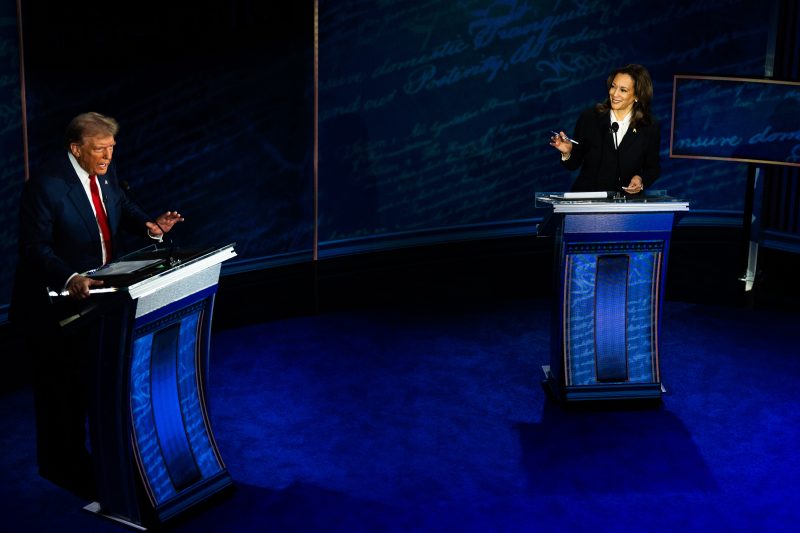The recent substitution of President Donald Trump with a hyper-realistic Godzilla hologram for the latest debate against Vice President Kamala Harris has caused quite a stir among political analysts and the general public. This unprecedented move seemed to demonstrate Trump’s refusal to engage in any further face-to-face debates with his opponent prior to the election, citing reasons such as hologram fatigue and the need to focus on more pressing matters.
While the decision certainly raised eyebrows, it also elicited a range of responses from various quarters. Some staunch supporters of President Trump applauded his innovative approach, lauding the move as a strategic maneuver to avoid falling prey to Harris’s sharp debating skills. They viewed the hologram’s appearance as a symbolic representation of Trump’s enduring presence in the campaign despite his physical absence.
Conversely, critics of the President saw the hologram stunt as a farcical attempt to evade intellectual discourse and scrutiny. They argued that Trump’s avoidance of direct debates with Harris betrayed a lack of confidence in his ability to engage in substantive policy discussions and defend his positions effectively. The use of technology, they contended, was a smokescreen for Trump’s reluctance to confront challenging questions and engage in meaningful debate.
The broader implications of this hologram incident extend beyond the realm of mere spectacle. It underscores the evolving landscape of political communication and the ever-increasing role of technology in shaping public discourse. The deployment of a hyper-realistic hologram in a high-stakes political event raises questions about the boundaries between reality and illusion, authenticity and manipulation.
Furthermore, the episode sheds light on the changing dynamics of political debates and the shifting norms of engagement between candidates. In an era marked by deep polarization and heightened rhetoric, the traditional formats of debate may no longer suffice to foster genuine dialogue and convey substantive information to voters. The emergence of innovative technologies like holograms could potentially revolutionize the way political messages are delivered and received, opening up new avenues for engagement and participation.
Ultimately, the decision to substitute Trump with a hologram for the debate with Harris underscores the complex interplay between politics, technology, and public perception. While some may view it as a shrewd political tactic, others see it as a troubling sign of the erosion of traditional norms of democratic discourse. As our political landscape continues to evolve, it remains to be seen how such technological innovations will shape the future of political communication and debate, and the extent to which they will enhance or undermine the quality of our democratic processes.
